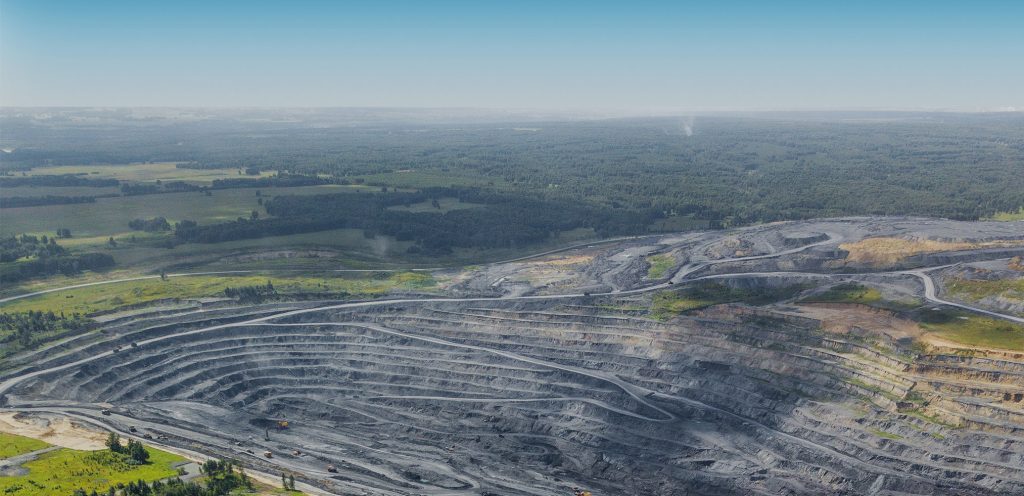Russia’s major coal producer Sibanthracite Group ready for significant increase of output this year as demand for Russian coal grows

By Eugene Gerden
The Russian Sibanthracite Group, the world’s largest producer and exporter of high-quality Ultra High-Grade anthracite wants to increase production up to 30 million tons by 2025 and increase exports, that will be part of ambitious plans of Russian Federation to become the main coal supplier to the entire Asian Pacific region.
In case of Sibanthracite, the plans for expansion of production (by at least 20%) have been recently announced by a new owner of the company – the Bashkir Industrial Holding.
It is planned, production will be increased at the majority of main mining assets of the company, particularly those, which are located in the Novosibirsk region, where Kolyvansky JSC and Razrez Vostochny LLC coal mines are located, and in the Kemerovo region, where Razrez Kiyzassky LLC and Razrez Verkhneteshsky LLC operate. At present the company’s overall reserves are estimated at 468.1 million tons of anthracite and coal, while among its key buyers are China, India and South Korea.
The previous owner of Sibanthracite was a well-known Russian businessman Albert Avdolyan, who acquired the asset in 2021 for US$1 billion. He explained the decision to sell Sibanthracite with the intention to focus on the development of the Elga coal deposit, one of the largest coal fields in Russia and the world in terms of reserves (2,2 billion tonnes) and the construction of infrastructure for coal exports. In this regard, the volume of coal production at the Elga plant will reach 50 million tonnes already this year. As part of the project, the carrying capacity of the Pacific Railway (a private rail line, which is built by the company from the field to the Elga port on the coast of the Sea of Okhotsk) is planned to be increased from 30 million to 50 million tons per year.
As part of plans of Russian state, is redirecting a significant part of the overall domestic annual coal output (about 437 million tonnes) to Asian continent already within the next several years.
Of these, the biggest supplies will be directed to China. According to the director of the coal department of the Russian Ministry of Energy Pyotr Bobylev, the volume of Russian coal exports to China in 2023 could reach 100-102 million tons, compared to 67 million tonnes in 2022. In case of India, the volume of supplies in 2023 is expected to reach 30-35 million tonnes, that will be also significantly higher than in 2022. In addition to China, there is a high demand for Russian coal in Southeast Asia: Sri Lanka, Malaysia and Vietnam. Moreover, exports to such countries as Turkey, Morocco and Pakistan are also growing.
In general, despite sanctions, there was no significant drop in coal exports from Russia in 2022. According to the Russian Ministry of Energy, last year it decreased by only 1% year-on-year and amounted to 221.2 million tons. Production, according to the ministry, increased in 2022 by 0.3% to 443.6 million tons due to increased supplies to the domestic market.
As for the current year, according to data of the Russian State Statistics Service, from January to September 2023, coal production in Russia increased by 0.9% to 315 million tons. In September of this year, Russian Energy Minister Nikolai Shulginov reported that coal exports had increased by more than 3% since the beginning of the year, without giving absolute figures.
Analysts believe the current conditions for the expansion of coal production and exports in the global market are favorable. Such a position has been recently expressed also by Russia’s Deputy Minister of Energy Sergei Mochalnikov, who said that the demand for Russian coal in major foreign markets for it is almost twice as high as the actual exported volumes. As for anthracite, it is traditionally in high demand both in the energy sector and in metallurgy. Prices for it, according to experts, are now at the level of $180-200/t.
Analysts of the Russian Ministry of Energy also predict in 2024 the global coal market will return to the long-term price norm, which was disrupted due to a series of “supply shocks” in 2021-2022. (Such as the EU embargo on supplies of coal from Russia, an unspoken ban on the import of Australian coal in China, etc.).
According to experts, de facto, the market has already played out these shocks, and the result has been a decline in prices: if in 2022 the average price of thermal coal in Newcastle, Australia – a key hub in the Asia-Pacific region – was $345/t, then in January–October of this year it dropped to $180/t. In 2017-2021 the price was $94/t. According to expectations, prices for energy coal will approach this level, adjusted for inflation in 2024.
